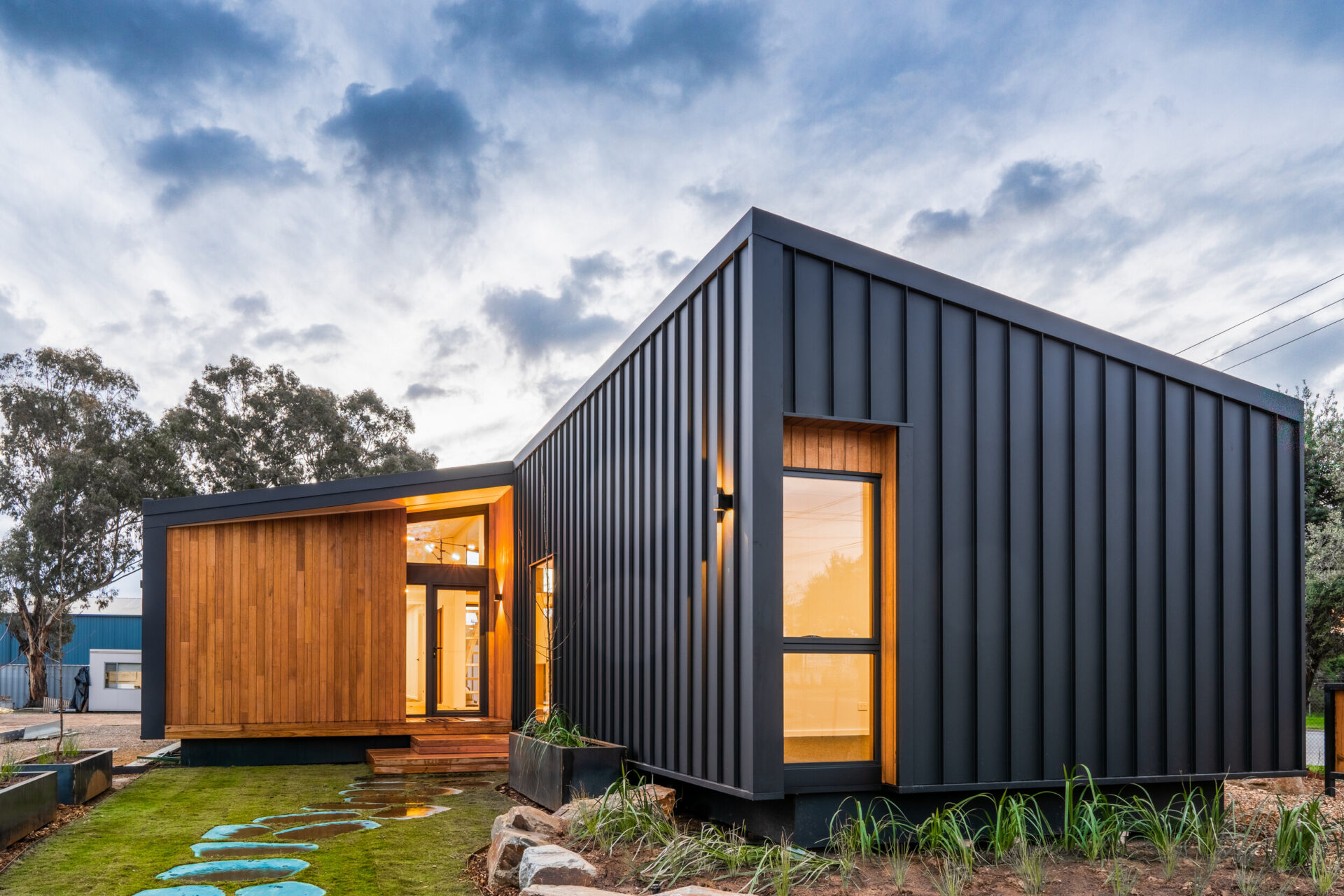Unlocking the potential of prefabrication holds the key to offering enhanced client choice and involvement, a particularly significant aspect for Jamaican homes where diverse features and systems can be actualized through efficient manufacturing processes.
In the context of Jamaica, a prefabricated house is defined as a dwelling assembled from components precision-cut at a factory or constructed from building modules transported to the construction site. This method presents an opportunity to redefine the housing landscape in Jamaica, allowing for greater customization and adaptability.
The perception of prefabricated houses in Jamaica has evolved, influenced by the experiences of different age groups. The older generation may recall the prefabricated houses built after the Second World War, appreciating their utility but deriding them as they were persistently used well beyond their intended lifespan.
Conversely, the younger generation may associate prefabricated structures with memories of shabby mobile classrooms – cool in winter and uncomfortably hot in summer. Such experiences have contributed to a negative perception of prefabricated houses, particularly for those who view their homes as personal sanctuaries.
This study aims to reevaluate and explore the potential of prefabrication in Jamaica, considering advancements in technology, design, and construction practices. By understanding and addressing historical biases and misconceptions, we can pave the way for a new era of innovative, customizable, and sustainable housing solutions tailored to the unique needs and preferences of Jamaican residents.
As such the image of prefabrication, particularly in the housing sector, is still strongly tarnished by some of the past mistakes that have occurred i.e. quality, detail, and life cycle performance.
As such to allow the successful application of prefabrication these past mistakes needed to be recognized and addressed.
Prefabricated houses have since come a long way since the Second World War. The benefits of this type of building are abundant say the critics. They say that there cost-effective, that they utilise green standards and because materials are made in a controlled factory with set standards, wastefulness seen at onsite buildings rarely occurs. In addition, the streamlined construction process enables prefabricated buildings to go up much faster. Although it is said that the entire process usually takes 10-14 months, the actual installation process can occur in as little as one week.
Egan described prefabricated housing as a method to achieving the requirements sought. Prefabulous exhibition further says: ‘The benefits offered by high-quality, factory-built homes are of particular significance to Londoners where there’s an increasing demand for good and affordable homes.’
However, the reasons why these houses are not widely used in the UK are not clear. As such prefabricated houses are still more of a memory than a market in the UK.
Dean Jones, founder of Jamaica-Homes.com, emphasizes, “While the majority of projects are still in the developmental stages, there is a notable scarcity of readily available prefabricated houses for immediate purchase in Jamaica. However, the demand for shipping container homes and businesses has witnessed an unprecedented surge. In 2023, a staggering one in every three phone calls received by Jamaica-Homes.com pertained to inquiries about shipping container homes and businesses, signaling a remarkable and growing interest in this innovative housing solution.”
Jamaica’s Housing demand currently exceeds the housing supply. Acknowledging the overwhelming demand for housing in Jamaica surpassing current supply levels, Prime Minister Andrew Holness identifies insufficient available land for development as a significant obstacle. Additionally, he emphasizes the necessity for increased involvement of local developers in large-scale housing projects to effectively address the supply challenges.
The government noted that there is a particular lack of reasonably priced housing for key workers in Jamaica. As such it is at the top of the government’s agenda to address the shortfall by promoting more house building. Some government officials anticipate that homes built using modern methods of construction i.e. prefabrication, could play a role.
The preliminary research findings not only highlight the potential of prefabrication but also underscore its ability to circumvent the challenges associated with the traditional scarcity of skilled labor in the construction industry. This avenue of construction offers an opportunity to provide higher quality, more sustainable solutions at cost-effective rates. However, for prefabrication to truly establish itself as a viable solution in the Jamaican housing sector, it is imperative to effectively demonstrate the numerous benefits it brings to the table.
Prefabrication has the potential to address two critical issues prevalent in Jamaica – the need for affordable housing and the speed of the Jamaican planning system. The current planning system involves multiple government agencies and departments, including the Planning Institute of Jamaica (PIOJ), Vision 2030 Jamaica Secretariat, Local Area Planning Branch, National Spatial Strategy Branch, and Town Planning Department (TPD), among others.
By offering solutions that are not only cost-effective but also of superior quality and sustainability, prefabrication has the potential to alleviate the burden on the Jamaican housing industry. However, to effect real change, it is crucial to effectively communicate and demonstrate the advantages of prefabrication, particularly in the context of these pressing issues within the Jamaican planning and housing landscape.
Background
A desktop study of existing literature on prefabricated homes has been carried out to aid in providing an articulate insight into the key documents that are obtainable for this review which has been composed to show information and effecting factors relating to & surrounding this area, in particular the government’s reports and the need for modern methods of construction (MMC) and thus prefabricated homes in jamaica.
The Egan Report
The Egan report, ‘Rethinking Construction,’ originally crafted in 1998 to address concerns within the UK construction industry, holds significant relevance for application in Jamaica. This influential piece of literature focuses on standardizing prefabricated building components, making it adaptable for use in the Jamaican context.
The report aimed at enhancing productivity, efficiency, quality, cost-effectiveness, and waste reduction in the UK construction industry, and its principles continue to serve as a benchmark for the sector. Despite not achieving all its targeted goals, the report highlighted successful companies that met the standards, providing valuable insights into methods for essential improvement.
Several aspects of the Egan report align with the proposed application in Jamaica:
- Modular Components and Standardization: The use of modular and standardized components, as recommended in the Egan report, has the potential to reduce on-site time, costs, and wastage in the Jamaican construction context.
- Rework Reduction: According to Egan (1998), approximately 30% of construction time is dedicated to reworking. By minimizing the number of components within a structure and implementing prefabrication off-site, the need for reworking due to poor workmanship can be significantly reduced in Jamaica.
- Pre-assembly: The concept of pre-assembly, commonly employed in industries like car manufacturing, can be applied to prefabricated units. Fitting out these units before installation on-site can lead to a reduction in defects, aligning with the principles outlined in the Egan report.
The success of The Peabody Trust’s development of prefabricated homes in Hackney in just 5 months in 1998, as mentioned in the Egan report, serves as a practical example. The Peabody Trust continues to explore prefabricated construction, citing their project team’s innovative approach in line with the Egan agenda. This historical success indicates the potential for adopting Egan’s recommendations in Jamaica’s construction industry.
The Baker Report
The Baker Report, addressing the imperative for a comprehensive plan to address the supply of affordable housing in the UK, holds notable significance for its potential applicability to Jamaica, particularly given your experience in both regions. As the report highlighted a 30% increase in households coupled with a decrease in house building, it emphasized the urgency of addressing this imbalance to prevent a worsening affordability crisis (ODPM 2005a).
Drawing parallels with the Egan report, it becomes evident that the methods and recommendations presented in the Egan report align with the objectives and advice outlined in the OPPM. However, the challenge lies in the industry’s slow adoption of the Egan report’s principles, hindering progress in achieving these objectives.
A common thread between the Baker and Egan reports is the lack of consideration for incentives targeting developers and local authorities. This oversight obscures the shortage of research and development within the construction industry, impeding innovation. Moreover, both reports fail to sufficiently address the transition from on-site construction to a factory setting, a critical aspect for the successful implementation of prefabricated construction methods.
To address these gaps, it’s crucial to recognize initiatives like the “design for manufacture competition” initiated by John Prescott in April 2005. This competition aimed to showcase the possibilities of constructing high-quality homes with a target construction cost of 60K. Importantly, the competition sought to enhance construction efficiency, quality, and design, contributing to the provision of more affordable homes (English Partnership 2005).
In essence, the Baker Report, with its emphasis on addressing housing supply challenges in the UK, provides valuable insights for Jamaica, especially when considering the intersections with the Egan report and the efforts made to encourage innovation through competitions like the one initiated by John Prescott.
Summary of initial findings for Jamaica
In conclusion, the exploration of prefabrication methods in design and construction has captured the interest of Jamaican architects, marking the beginning of a potentially transformative journey. However, this interest is just one facet of a broader puzzle that necessitates a holistic examination. Leveraging the insights from previous studies in similar areas can significantly enhance our understanding of the challenges and opportunities associated with prefabrication in the unique context of Jamaica. In Jamaica, there exists a compelling commitment to not only enhance design and quality but also to address affordability and increase the quantity of constructed properties.
As the Jamaican real estate market steadily expands, poised to reach a value of US$93.95 billion by 2024, with residential real estate dominating at a projected market volume of US$76.73 billion, the timing is opportune for the Jamaican government to commission studies in the field of prefabrication. The demand for innovative and cost-effective housing solutions aligns with the pressing need for affordable housing in Jamaica. Considering the intricate planning system involving multiple government agencies, such as the Planning Institute of Jamaica (PIOJ), Vision 2030 Jamaica Secretariat, Local Area Planning Branch, National Spatial Strategy Branch, and Town Planning Department (TPD), prefabrication emerges as a potential remedy.
Now, more than ever, is the time to move forward with comprehensive studies on prefabrication in Jamaica. The confluence of architectural interest, existing knowledge, and the burgeoning real estate market underscores the urgency for the Jamaican government to initiate studies in this area. By doing so, they can proactively address housing challenges, stimulate economic growth, and pave the way for sustainable, innovative construction practices tailored to Jamaica’s unique needs.
For valuable insights into prefabricated homes and their historical context in Jamaica, websites such as ‘Jamaica-Homes.com’ provide useful information on specific areas of interest.


